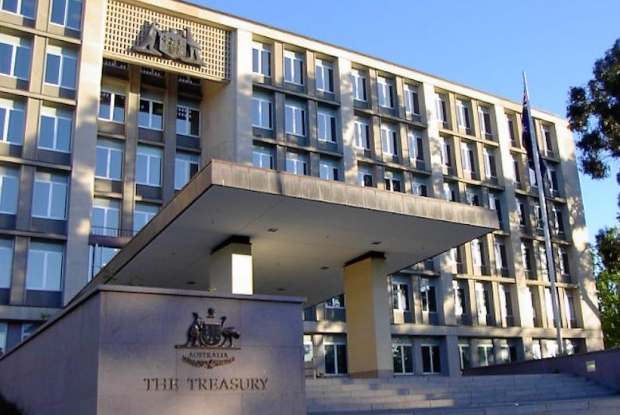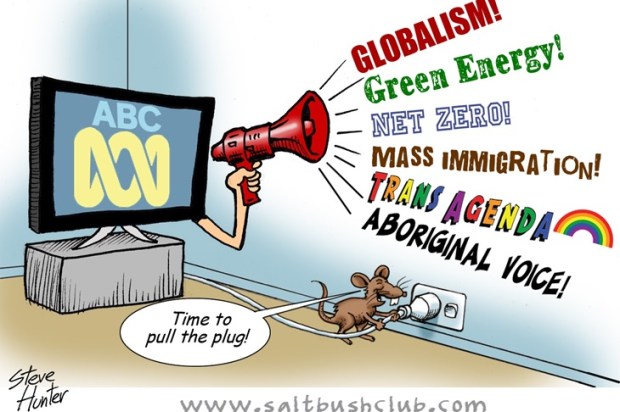There are certain human inventions that the world would probably be much better without. Things like nuclear and biological weapons or the communist manifesto or perhaps even chemicals such as DDT or Agent Orange. And Australia has in its own way contributed to the list of humanity destroying inventions, the most notable being the City of Canberra.
Contributing to the Australian Financial Review this week, Canberra resident and partner of Deloitte Access Economics, Chris Richardson writes:
In many ways Australia’s biggest business has had a very good pandemic:
- Demand for its services soared when COVID-19 came to town, and it had to borrow lots to fund the necessary expansion in its activities.
- Yet markets were more than happy to fund that expansion, and it locked away its extra borrowings for a decade, doing so at record low rates.
- Even better still, standard corporate metrics look sweet. Net interest cover continues to improve, and the overall interest bill is below its 2018-19 peaks. Similarly, although gearing ratios are hard to calculate for this business, they don’t appear to have budged much either.
- Finally, although demand will fall away again over the next year or two, the business has carefully avoided ongoing increases to its expense base.
But the “business” we are talking about here is the Australian federal government. And while the jump in its debt has generated much angst, there’s lots to like about federal finances.
The Australian federal government is a business. Now that’s news. And the government has done very well out of the pandemic. Well, that’s not really news.
Richardson, in his oped, proceeds to argue that Australia’s debt position is not that bad because, despite increased Commonwealth debt levels, forecasts of net interest payments to national income are projected to decline.
Before addressing Richardson’s debt accounting argument, let’s discuss Richardson’s semantic argument.
According to Richardson, the Australian federal government is a “business”. Yes, he was trying to draw an analogy and yes, he does place the word business in inverted commas. He could have equally defined the Australian federal government as an “organised crime syndicate” and stayed true to the analogy and that it has had a very good pandemic.
According to the Cambridge online dictionary, business is “the activity of buying and selling goods and services”. When your revenues are sourced from the legal application of force empowered through the literal application of force, it’s kind of misleading to describe that as conducting business. And selling goods and services? Come on.
But on his debt analysis, Richardson starts with the observation that “[B]efore COVID-19 arrived, net federal debt had been forecast to fall.” And forecast by whom? Deloitte Access Economics? The Commonwealth Treasury? Nostradamus? Not clear and not disclosed to test.
But not just forecast by whom, how about forecast when? For example, was it made in 1997 before the Commonwealth effectively repaid all its debt? Or was it made in 2009 before the Rudd Government delivered budget surpluses as far as the eye could see? Or was it made in 2019 as the economy was slowing under the weight of 15 years of economic re-regulation tied up with a red and green tape ribbon?
The essence of Richardson’s argument (nee fantasy) is that:
- Commonwealth debt is surging, but
- National income is also surging, plus
- Low interest rates on the increased debt means lower (than would be otherwise) interest payments.
So all hunky dory. But if you corrupt the lyrics to the famous Meatloaf song, “one out of three is sad”.
Debt is surging. No dispute. But income is not surging. Private sector activity has been destroyed and is being replaced by public sector spending funded by this debt. Australia is borrowing to consume which means a reduction in future consumption. And the only way to keep this income going is to take on more debt. This is a downward circular argument. We need government spending to maintain national income, this needs debts. We need more income to service the debt so we need more government spending to deliver income and this needs more debt. And on and on and on.
Lost also in Richardson’s income argument is that the private sector economy has been significantly wounded, particularly in Victoria because of their three/four month lockdown/lockup. State income levels are masked by federal funding because many businesses, not yet failed are zombies.
But also let’s not forget the pernicious effects of the state border opening and closings and openings and closings and periodic yet capricious short period lockdowns. If you run an actual business, that requires customers to voluntary trade with you, how do you manage staff, supplies, inventory and any other parts of your business under these conditions. Imagine being a restaurant or a tourism operator uncertain when your customers may or may not be allowed to transact with you. Imagine buying produce and training staff to open on Monday to be told by the government “shut down for two weeks”.
The other important point is that the low interest rates for Commonwealth debt does not mean lower repayments. It just means repayments in a different way. The low interest rates are a result of extraordinary monetary policy interventions by the RBA. This has enormous distortionary effects, including preventing the failure many bad investments and the redeployment of capital thus hampering productivity. It also includes inflation which as readers know, is also a big fat tax because like a classic tax, it reduces purchasing power and generates revenue for governments. For example, more income tax through bracket creep, more GST through consumer price inflation, more CGT and stamp duty from asset price inflation.
It may be the case the benefits of the federal government’s large fiscal and monetary expansion were necessary compared to the alternative of a complete destruction of the Australian economy. But to imply, as Richardson has, that more debt is good and that there are no costs is as fantastical as suggesting that tax cuts pay for themselves and increased regulation improves productivity.
More likely is that Richardson is a product of his environment, Canberra. A town that has also had a very good pandemic.
Stephen Spartacus blogs at Sparty’s Cast.
Got something to add? Join the discussion and comment below.
Get 10 issues for just $10
Subscribe to The Spectator Australia today for the next 10 magazine issues, plus full online access, for just $10.


























Comments
Don't miss out
Join the conversation with other Spectator Australia readers. Subscribe to leave a comment.
SUBSCRIBEAlready a subscriber? Log in